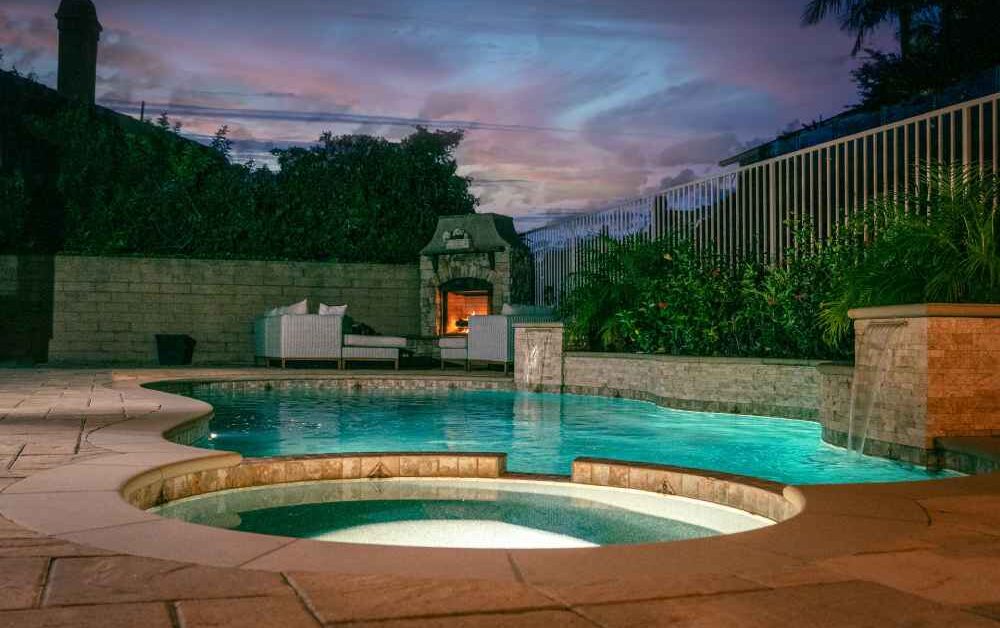Transforming your backyard into a personal oasis with a stunning pool is a dream for many homeowners. A well-designed pool not only provides a refreshing escape from the heat but also serves as a focal point for outdoor entertainment and relaxation. If you’re considering adding a pool to your property, this guide will walk you through the essential steps to design the perfect aquatic retreat.
Contents
- 1 Assessing Your Space and Needs
- 2 Selecting the Ideal Pool Type
- 3 Designing Your Pool’s Shape and Style
- 4 Incorporating Essential Features
- 5 Choosing the Right Materials
- 6 Prioritizing Safety and Maintenance
- 7 Integrating Landscaping and Outdoor Living Spaces
- 8 Embracing Energy Efficiency and Sustainability
- 9 Collaborating with Professionals
Assessing Your Space and Needs
Before diving into pool design, it’s crucial to evaluate your available space and personal requirements. Consider these factors: yard dimensions and topography, local regulations and building codes, your budget constraints, intended pool usage (exercise, family fun, entertaining), and desired features and amenities. By clearly defining these aspects, you’ll be better prepared to make informed decisions throughout the design process.
Selecting the Ideal Pool Type
There are several pool types to choose from, each with its own advantages. Inground pools include concrete (highly customizable and durable), fiberglass (quick installation and low maintenance), and vinyl (affordable and versatile). Above-ground pools are more budget-friendly and easier to install, suitable for temporary solutions or smaller spaces. Consider your long-term goals, maintenance preferences, and budget when choosing the pool type that best fits your needs.
Designing Your Pool’s Shape and Style
The shape and style of your pool should complement your home’s architecture and landscape. Popular pool shapes include rectangle (classic and versatile), freeform (natural, organic look), L-shape (ideal for separating shallow and deep ends), and kidney (curved design that fits well in many landscapes). When it comes to style, consider whether you want a modern, tropical, or traditional look. Your pool’s design should create a cohesive outdoor living space that reflects your personal taste.
Incorporating Essential Features
Enhance your pool’s functionality and appeal with these popular features: beach entry (gradual slope into the pool), tanning ledge (shallow area for lounging), spa or hot tub (for relaxation and hydrotherapy), water features (fountains, waterfalls, or bubblers), and lighting (LED options for ambiance and safety). Remember to balance your desired features with your budget and maintenance capabilities.
Choosing the Right Materials
Select materials that are both aesthetically pleasing and practical for your climate and lifestyle. Consider pool interior finishes (plaster, pebble, tile), decking materials (concrete, pavers, natural stone), and coping options (stone, brick, concrete). Opt for materials that are slip-resistant, durable, and complement your overall design scheme.
Prioritizing Safety and Maintenance
Safety should be a top priority in your pool design. Include these essential safety features: proper fencing and gates, non-slip surfaces around the pool, adequate lighting, and safety equipment (life rings, reaching poles).
Additionally, consider the long-term maintenance requirements of your pool. Incorporate features that simplify maintenance, such as efficient filtration systems, automatic cleaners, and easy-to-clean surfaces. Proper planning for safety and maintenance will ensure your pool remains enjoyable for years to come.
Integrating Landscaping and Outdoor Living Spaces
Create a cohesive backyard retreat by integrating your pool with thoughtful landscaping and outdoor living areas. Plant privacy screens with trees or shrubs, design poolside seating areas, install an outdoor kitchen or bar, and create shade with pergolas or cabanas. These elements will enhance your pool’s appeal and create a true outdoor oasis.
Embracing Energy Efficiency and Sustainability
Incorporate eco-friendly features to reduce your pool’s environmental impact and operating costs. Consider variable-speed pumps, solar heating systems, LED lighting, saltwater chlorination systems, and pool covers to reduce evaporation and heat loss. These sustainable choices can lead to significant long-term savings while minimizing your carbon footprint.
Collaborating with Professionals
While DIY pool projects are possible, working with experienced professionals can ensure a smooth design and construction process. Consider hiring pool designers, landscape architects, and licensed pool contractors. These experts can provide valuable insights, navigate local regulations, and bring your vision to life.
Designing your dream pool is an exciting journey that requires careful planning and consideration. By understanding your needs, exploring various design options, and incorporating essential features, you can create a stunning backyard oasis that provides years of enjoyment for you and your loved ones.
Remember to prioritize safety, maintenance, and sustainability in your design to ensure your pool remains a valuable asset to your home. With the right approach and professional guidance, you’ll soon be lounging by your perfect pool, basking in the beauty of your own personal paradise.

